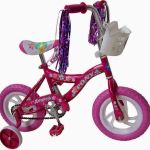
- Understanding Cycling Kit Materials - Why Proper Cleaning Matters
- Best Ways to Clean Your Cycling Kit - Step by Step
- Pre-Wash Preparation and Gentle Soak
- Choosing the Right Detergent for Cycling Gear
- Washing Machine vs Hand Wash - What Works Best
- Drying Techniques for Longer Lifespan
- Real Experiences from Cyclists on Kit Care
- Expert Recommendations and Cycling Guider
1. Understanding Cycling Kit Materials - Why Proper Cleaning Matters
Your cycling kit is not just clothing; it’s technical gear designed to wick sweat, reduce drag, and protect your skin during long rides. Jerseys, bib shorts, and base layers are often made from delicate synthetic fibers that can easily be damaged if washed incorrectly. That’s why knowing the best ways to clean your cycling kit is crucial for both performance and longevity.
2. Best Ways to Clean Your Cycling Kit - Step by Step
Cleaning a cycling kit is about balance: removing sweat and bacteria while protecting the fabric’s elasticity and structure. Whether you ride casually or train daily, following a proper cleaning routine ensures your kit feels fresh and lasts longer.
2.1 Immediate Rinse After Use
After a sweaty ride, don’t let your kit sit in a pile. Rinsing it with cold water right away prevents bacteria buildup and keeps odors from setting in. Many professional riders swear by this simple habit.
2.2 Spot Treatment for Stains
For grease marks or mud splashes, apply a gentle pre-wash solution to the affected areas. Avoid strong bleach or harsh stain removers, as these can ruin the fabric.
3. Pre-Wash Preparation and Gentle Soak
Before tossing your gear into the wash, turn jerseys and shorts inside out. Soaking in a mild detergent solution for 10–15 minutes helps loosen dirt and sweat salts. This step reduces the need for aggressive scrubbing later.
4. Choosing the Right Detergent for Cycling Gear
Avoid fabric softeners and strong laundry powders. Instead, choose liquid detergents designed for sports apparel. These protect the fibers while still eliminating bacteria and odors. A neutral pH detergent works especially well for sensitive skin.
5. Washing Machine vs Hand Wash - What Works Best
While hand washing is gentler, many cyclists successfully use a washing machine. Always select a cold water cycle and place the kit in a mesh laundry bag for extra protection. Avoid tumble dryers as they can break down elasticity over time.
6. Drying Techniques for Longer Lifespan
Hang dry your cycling kit in a shaded, well-ventilated area. Direct sunlight can fade colors and damage fibers. For bib shorts, hang them upside down by the legs to maintain strap shape and elasticity.
7. Real Experiences from Cyclists on Kit Care
One amateur racer shared how improper drying ruined his expensive bib shorts in just a few months. After switching to air drying in the shade, his kit lasted more than double the time. Stories like this remind us how small changes in routine can make a big difference.
8. Expert Recommendations and Cycling Guider
Professional cyclists and coaches agree that gear maintenance is as important as bike maintenance. By following these steps, you protect your investment and improve comfort on every ride. For reliable care products and expert advice, Cycling Guider offers top-rated detergents, gear bags, and specialized cleaning tools designed for cycling apparel.







 Billet BMX5.0 (2 reviews)
Billet BMX5.0 (2 reviews) Far East Children Bicycle Factory1.0 (1 reviews)
Far East Children Bicycle Factory1.0 (1 reviews) Archer Motorsports, Inc.4.0 (8 reviews)
Archer Motorsports, Inc.4.0 (8 reviews) YEP Bike Works4.0 (55 reviews)
YEP Bike Works4.0 (55 reviews) Gorham Bike & Ski4.0 (498 reviews)
Gorham Bike & Ski4.0 (498 reviews) Alchemy Bikes4.0 (37 reviews)
Alchemy Bikes4.0 (37 reviews) How to Teach Kids to Ride a Bike: A Step-by-Step Guide for Parents
How to Teach Kids to Ride a Bike: A Step-by-Step Guide for Parents Tips for Riding on Busy City Streets: Smart Strategies for Urban Cyclists
Tips for Riding on Busy City Streets: Smart Strategies for Urban Cyclists Best US National Parks for Mountain Biking: Ride Epic Trails Across America
Best US National Parks for Mountain Biking: Ride Epic Trails Across America Best Aero Helmets for Time Trials and Racing
Best Aero Helmets for Time Trials and Racing How to Clean and Lubricate Your Bike Chain Like a Pro
How to Clean and Lubricate Your Bike Chain Like a Pro 10 Must-Have Items for Long-Distance Cycling Trips
10 Must-Have Items for Long-Distance Cycling Trips